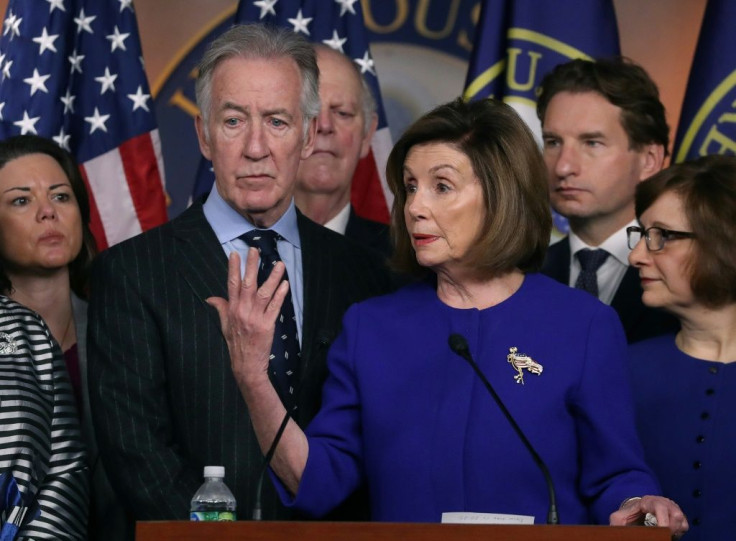USMCA: What Are The Changes In The New Trade Deal?

A year after signing a new regional free trade pact, the United States, Mexico and Canada have agreed to key changes to the deal that can win approval from the US Congress.
After months of tense negotiations, the agreement with House Democrats opens the way for the United States-Mexico-Canada Agreement to succeed the 1994 North American Free Trade Agreement (NAFTA), marking a victory for President Donald Trump.
Although Mexico's congress already approved the deal, the revised accord now goes for ratification by the legislatures of the three countries. Here a summary of the key elements:
US labor leaders have long railed against NAFTA, blaming it for a loss of manufacturing jobs, and Democratic House Speaker Nancy Pelosi vowed not to allow a new trade agreement to pass Congress unless it contained guarantees that labor provisions in Mexico will be enforced.
After months of negotiation, Pelosi said that with the changes the trade pact will be "infinitely better than what was initially proposed by the administration."
Powerful AFL-CIO labor federation President Richard Trumka also endorsed the changes, saying that "for the first time, there truly will be enforceable labor standards," including a process allowing for inspections of factories.
The new provisions will monitor Mexico's implementation of labor reforms, setting key benchmarks for compliance, and "facilities-based enforcement" of obligations for all goods and services, with penalties for goods that fail to meet standards.
This will require "verification of compliance by independent labor experts," which reportedly was a compromise after Mexico balked at factory inspections.
They also prevent one country from blocking another from calling for a panel to resolve a dispute.
US House Democrats also insisted on including strong environmental standards in the trade pact, and added new mechanisms to monitor violations.
As with labor standards, the deal creates the position of environment attaches in Mexico City to monitor laws and regulations.
Another of the tweaks to the revised deal takes aim at the high cost of drugs.
The changes remove a provisions requiring the three countries to provide at least 10 years of exclusivity for biologic drugs, which allow generics to enter the market more quickly, reducing prices.
Since taking effect, NAFTA has boosted regional trade, helped stabilize the Mexican economy, and reshaped manufacturing into a seamless tri-national chain.
While critics, including Trump, blame NAFTA for the loss of US manufacturing jobs, many more jobs were lost to technology.
And NAFTA provide a big boost to GDP which outweighed the jobs lost due to the trade deal, according to research by the Peterson Institute of International Economics.
An analysis by the US International Trade Commission estimates that within six years the USMCA would raise US real GDP by 0.35 percent and US employment by 176,000 jobs, with the largest gains in manufacturing.
The USITC estimates the new pact will increase both US imports from Canada and Mexico and exports to those countries by about the same amounts.
In 2017, Canada and Mexico were the two largest export markets for the United States, and two of the top three import sources. The United States exported $282 billion in goods to Canada and $243 billion to Mexico in 2017.
By comparison, the United States exported only $130 billion in goods to China, its third-largest export market.
The United States received $314 billion worth of imported goods from Canada in 2017 and $299 billion worth from Mexico.
Auto manufacturing is a key part of regional trade, and the USMCA will require that 75 percent of auto content be made in the region, increased from 62.5 percent, and that 40-45 percent be made by workers earning at least $16 an hour.
Mexico also agreed to continue to recognize US auto safety standards, unless Mexican regulators conclude they are inferior to their own standards.
At Canada's insistence, the United States agreed the dispute settlement system -- formerly known as Chapter 19 -- should remain in the deal.
However, the agreement does make some changes to the more controversial "Investor-State Dispute Settlement" powers, which critics said had allowed powerful companies and wealthy investors to invalidate local laws and court decisions through unaccountable arbitration.
When NAFTA took effect in 1994, e-commerce hardly existed in its current form and modernizing its provisions was a key premise of the talks. The new agreement prohibits customs duties for digitally distributed goods like software and games, e-books, music and movies.
It would also limit local governments' powers to force companies to disclose propriety source code or place restrictions on where data may be stored.
Tucked in the agreement is a provision that appears designed to stop either Canada or Mexico from seeking a better deal with Beijing. If any signatory seeks to enter into a free-trade agreement with a "non-market-economy" -- read China -- the other parties will then be allowed to cancel the three-country deal and replace it with a bilateral agreement.
The new trade pact will remain in force for 16 years, but will be reviewed every six years. If the parties decide to renew the agreement, it will be in effect for another 16 years. But if there is a problem, officials would have 10 years to negotiate to resolve their differences before the treaty would expire.
© Copyright AFP 2024. All rights reserved.





















